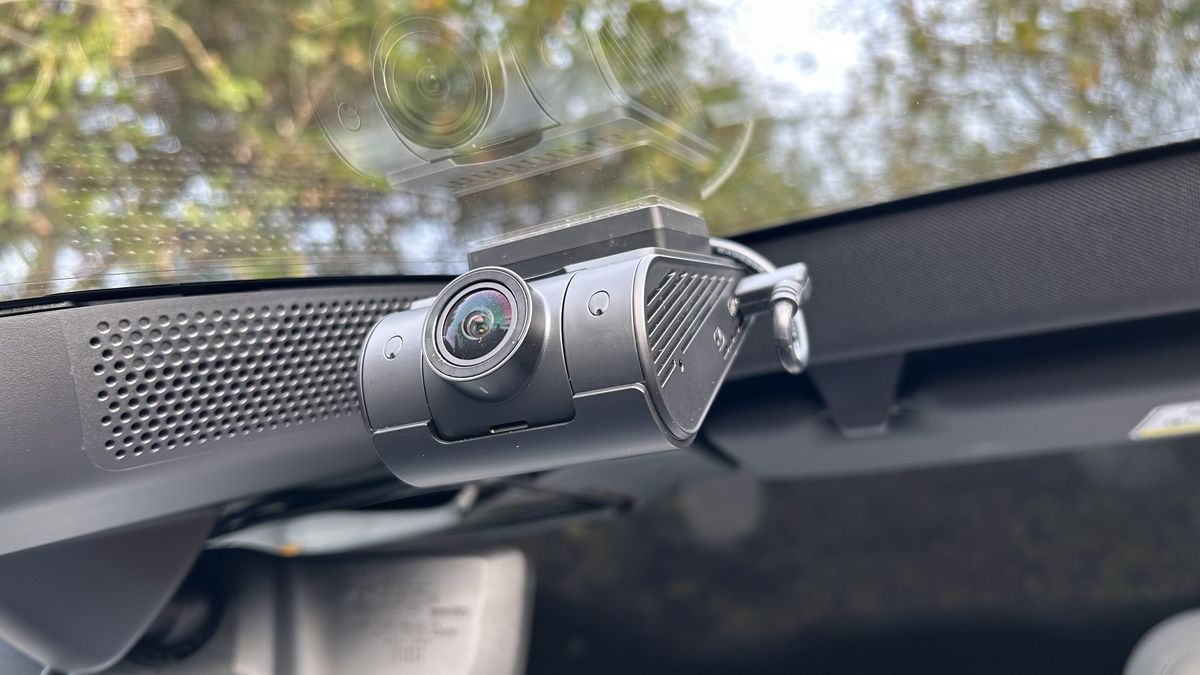
Viofo A329 Dash Cam: one-minute review
I’m a big fan of any dash cam, no matter what the brand or its capabilities. They just make good sense, and offer some peace of mind when I’m behind the wheel. And, while I really liked recent arrival the Nextbase Piqo for its no-frills setup and operation, the Viofo A329 Dash Cam is an altogether more sophisticated offering.
The Viofo A329 Dash Cam is a step up from the Viofo A229 Pro Dash Cam, which preceded it, but it’s also up against some very stiff competition from the other best dash cams out there. Bear in mind, this is a premium model, so while it comes with lots of features and functions, the Viofo A329 Dash Cam carries a high-ish price tag too: in excess of $300 / £300, though exactly how much you’ll pay depends on the bundle you choose.
However, the upside to that added expense is lots of great features. The Viofo A329 seen here also arrives as a two-channel offering, which means there’s a forward-facing camera and a smaller supplementary unit that captures video out of the back of your vehicle. As a result, there’s more work involved in getting it set up and running, with plenty of cable concealment to be done as part of the process.
Nevertheless, I’d say it’s well worth the effort, as the Viofo A329 Dash Cam offers 4K, 60 frames per second, Ultra HD footage at the front and 2K at the back, with each camera equipped with a Sony Starvis 2 image sensor and HDR recording. Add in 2.4GHz and 5GHz Wi-Fi, voice control, and notifications, along with advanced parking mode capability plus support for external SSD storage, and the Viofo A329 Dash Cam soon starts looking like very good value for money.
It’s all about the performance with this premium dash cam. I found the Sony Starvis 2 IMX678 1/1.8-inch 8-megapixel image sensor and rear-facing Sony Starvis 2 IMX675 1/2.8-inch 5-megapixel image sensor more than able in most driving scenarios. Footage captured after dark was no less impressive than the footage taken during dull and grey days, with both cameras adept at picking out details such as license plates and road signs.
Thankfully, Viofo has taken into account the fact that 4K files soon bulk out microSD cards. Therefore, it’s possible to hook up an available SSD drive and store content directly to that, using the benefit of integrated Wi-Fi 6 technology. This is a practical solution for dealing with bulky chunks of data, and promises to be three times quicker, operating in the 5GHz band at speeds of up to 30Mbps. The specification also means that the A329 is optimized so that you can view and manage files quickly and easily via a phone too, using Viofo’s own very decent app.
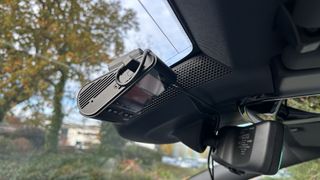
Viofo A329 Dash Cam: price and availability
The Viofo A329 Dash Cam is available now with a single front camera directly from Viofo being reduced by 18% to $329.99 at the time of writing, while the front and rear camera from Viofo is currently reduced by 15% to $399.99. It’s a similar story for the UK market with the former costing £329.95 (currently reduced to £299.95) and £399.95 (currently £359.95) for the latter two-camera bundle.
Viofo A329 Dash Cam: specs
| Video | Front 4K 3840 x 2160p 60fps / Rear 2K 2560 x 1440p 30fps |
| Field of view (FOV) | 140 degrees front/rear |
| Storage | MicroSD up to 512GB, not included or up to 4TB SSD |
| GPS | Yes |
| Parking mode | Yes, with constant power cable, not included |
| App support | Viofo app |
| Dimensions | 3.9 x 2.4 x 1.7 inches front. 1.1 x 2.8 x 1.5inches rear |
| Weight | 2oz / 59g |
| Battery | Yes |
Viofo A329 Dash Cam: Design
When it comes to design Viofo hasn’t changed too much compared to the Viofo A229 Dash Cam, with the A329 having a virtually identical front-facing camera unit. That’s no bad thing, as I liked the way the A229 was styled, with some neat design touches that make it a little more practical than its rivals. I particularly like the way the camera it can be attached to your windscreen, using the sticky patch on the mount or via static sheets for easier removal. The lens can then be moved into the perfect position using a click-based lever movement that adjusts it upwards and downwards.
There’s also the benefit of a sizable rear screen, which is crisp and clear, with operational buttons directly beneath that. This arrangement allowed me to access most if not all of the controls without the need for the supporting app. However, I also found that it’s possible to squeeze even more from the Viofo A329 Dash Cam by exploiting the software features, especially when it came to file management if I was hooked up using the SSD external drive option.
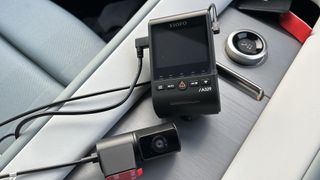
The unit itself is chunky, without being overly bulky, and feels nicely made, as the A229 did. Viofo includes everything you need to get up and running in the box, although if you’re very enthusiastic about your dash cam it might be worth considering the additional Viofo accessories for this model. These include a polarizing lens filter and a wireless Bluetooth remote control. In addition, there’s an optional hardwire kit, which enables a more permanent installation than plugging the camera in via a 12V vehicle socket.
For the rear-facing camera, Viofo has kept the design lines simple and straightforward. The camera is easily mounted to the glass using another sticky pad, and can be angled into the optimal position using the same type of lens adjustment method.
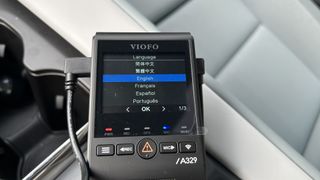
Viofo A329 Dash Cam: Performance
The Viofo A329 Dash Cam does feel like a step up from the competition. Much of that is down to the fact that it records video in 4K at 60fps. Having this capability means it trounces many rivals, with many lesser models shooting 4K at 30fps, and upping the frame rate potentially results in smoother and crisper video. I found having the HDMI 4K video-out port made it very quick and easy to view even sizeable chunks of footage too.
Being sure that things like license plates are being captured legibly is reassuring, but this unit is good at helping to pick out things like badges, car logos and even facial features too. The beefier specification is also good for high-speed scenarios, thanks to the faster capabilities of the camera. Of course, there’s a slight trade-off in that this creates a larger bank of video files over time, but Viofo has thought of this by making the A329 Dash Cam fully compatible with external SSDs, so a drive can be used as a backup if my microSD card starts groaning under the weight of content.
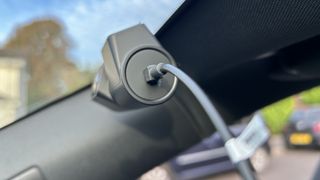
Up front, the Sony Starvis 2 IMX678 1/1.8-inch 8-megapixel image sensor proved very impressive, with footage showing plenty of crisp detail. Even the rear camera, which has a smaller and lower-resolution Sony Starvis 2 IMX675 1/2.8-inch 5-megapixel sensor, was very good when it came to capturing things like license plates. Better still, after dark it proved quite good at capturing the faces of drivers sitting in the car behind, which is notable in itself.
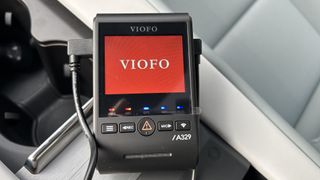
All this 4K content soon stacks up mind, so Viofo has integrated Wi-Fi 6 technology for this model. This, it claims, is three times more potent at operating within the 5GHz band and offers up to 30MBps. Viofo reckons a one-minute 4K video can be downloaded in under 10 seconds and, during my time with the dash cam, I see no reason to disagree. Using this in tandem with an external SSD is a good way to go, allowing storage of lots of content for as long as it is needed.
Should you buy the Viofo A329 Dash Cam?
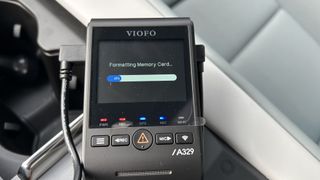
Buy it if…
Don’t buy it if…
How I tested the Viofo A329 Dash Cam
- I installed the dash cam into a test car for a set period of time
- I used it for several journeys during both day and night
- I connected it to my phone and downloaded recordings for comparison
I reviewed the Viofo A329 Dash Cam during the course of several days, when it was faced with capturing footage in a range of weather conditions. The camera units were installed in a test vehicle and powered via the 12V socket, rather than being hardwired in. As always, it should be noted that this temporary route does occasionally limit some of the features and functionality, especially when it comes to parking surveillance.
- First reviewed November 2024
